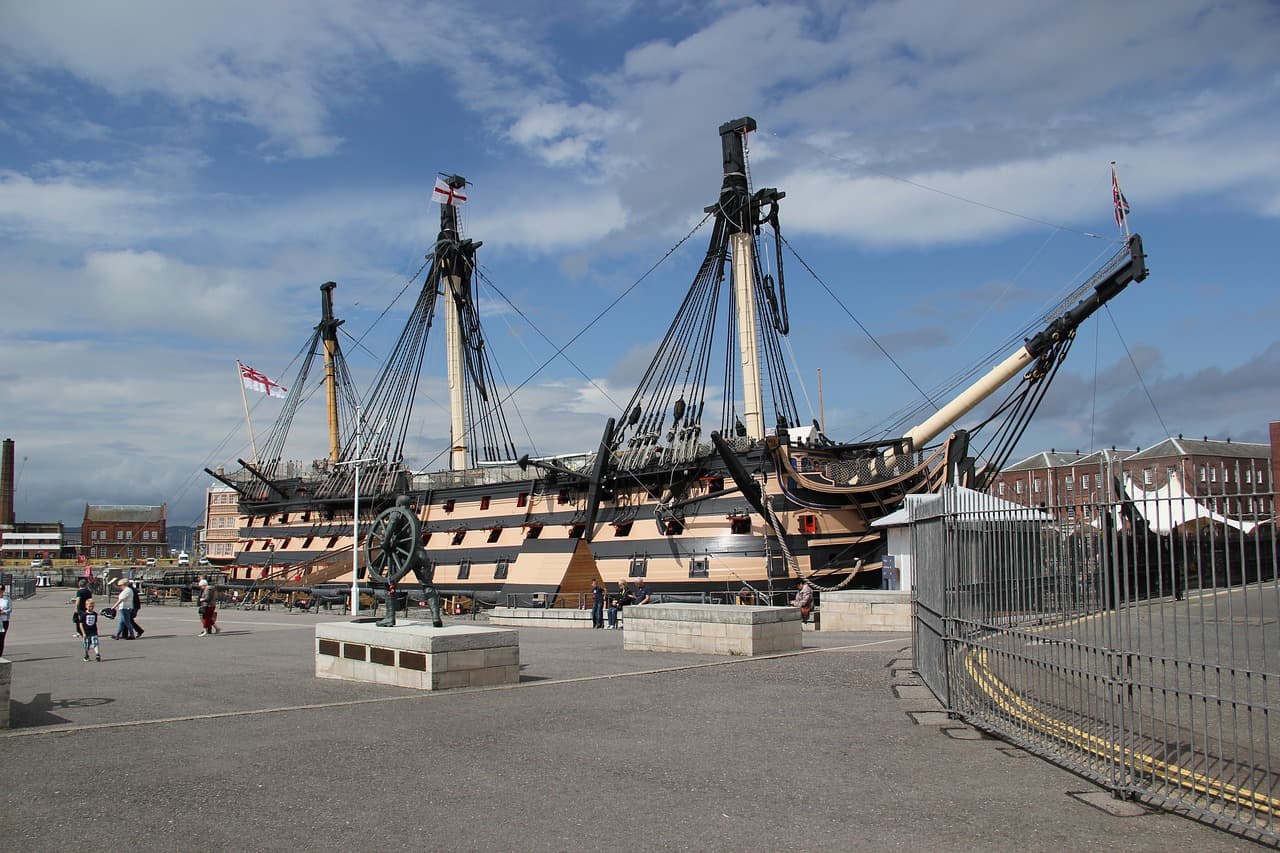
The Battle of Trafalgar took place on 21st October 1805. It was a naval engagement between the British Royal Navy and the French and Spanish Navies during the Napoleonic Wars.
Although the British Royal Navy was able to destroy the biggest threat to British security, it resulted in the loss of Britain’s national hero. Here, we have everything you need to know about one of Britain’s most notable victories…
Why did the Battle of Trafalgar take place?
The French military commander, Napoleon Bonaparte, had plans to invade the United Kingdom. As part of these plans, the French and Spanish fleets joined forces to take control of the English Channel.
Under the command of the French admiral, Pierre-Charles Villeneuve, the combined fleets sailed from the south of Spain, and encountered the British fleet, commanded by admiral Lord Nelson. The British fleet was assembled to defend this threat, and the encounter took place off Cape Trafalgar, in the Atlantic Ocean along the southwest coast of Spain.
HMS Victory
HMS Victory is best known for its role at the Battle of Trafalgar. Although the British force was extremely outnumbered during this battle, Vice-Admiral Lord Nelson led Britain to victory against the French and Spanish.
Housing over 800 crew members, Victory was built with 104 guns, and was designed to be one of the biggest and most important ships within the British navy. It is the only surviving ship to have fought in the French Revolution, the Napoleonic Wars and the American War of Independence.
The Battle
Villeneuve’s fleet was ordered to form a single line whilst heading north, and so Nelson ordered his fleet to form two squadrons in order to attack Villeneuve’s fleets from the west. With only 27 ships, Nelson was outnumbered against the 33 French and Spanish ships. He was also at another disadvantage as the largest warship out of all fleets; Santísima Trinidad, belonged to the Spanish.
Nevertheless, at 11:50 am Nelson, aboard the HMS Victory, signalled his famous message to the British seamen: “England expects that every man will do his duty”. They then began their attack on Villeneuve’s line. During the battle, most of Nelson’s squadron was able to break through and shatter the enemy’s line.
The British had more superior weapons and exceptionally trained fighters, therefore, the British were able to fire three to four times more than the French. The enemy’s tactics were to shoot at the British flagship’s masts, however, as the French had to aim high they often missed, and so the British shot at the opposition’s below deck in order to inflict more damage.
During the battle, Nelson was shot with a musket ball. He was carried below to the cockpit to avoid alarming the other crew members. As the hours passed by, Nelson grew weaker and weaker, but still continued to give out instructions. Three hours after he had been shot, Nelson passed away at 47 years of age, but was still conscious long enough to learn about his victory.
By 1:45pm, Villeneuve had surrendered. Therefore, the British captured in total 18 enemy fleets, although most of these sank the following day during a storm. Nelson’s body, preserved in a cask of brandy, was transported back to England where he lay in state.
Victory at what cost?
The cost of victory during this battle was incredibly high. Not only did Britain lose it’s greatest naval commander, but around 1,500 British seamen were either killed or wounded, and there was almost 20,000 prisoners and 6,000 enemy casualties.
You can celebrate Britain’s greatest naval commander with this incredible sovereign range, released to mark the 225th anniversary of Nelson’s victory at the Battle of the Nile, HERE.


